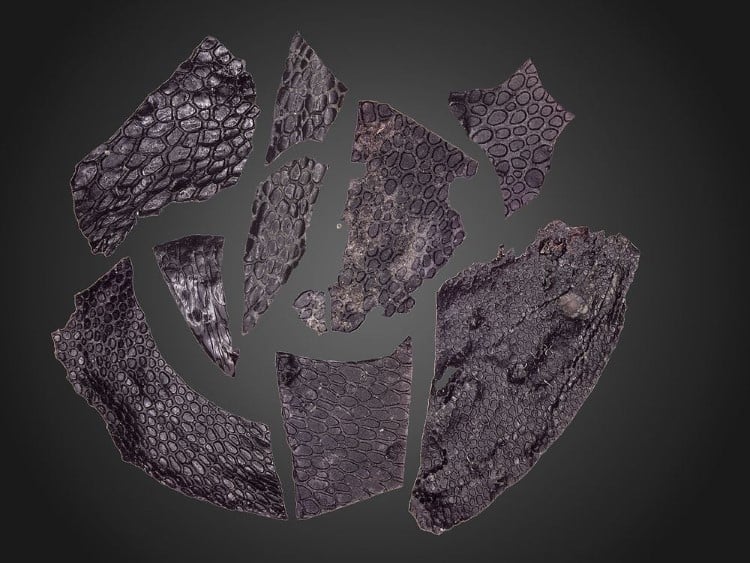
Photo: Current Biology/Mooney et al.
A skin fossil smaller than a fingernail is making big waves for the information it may give about the development of vertebrates. The sample was discovered in Oklahoma’s Richards Spur, a vast limestone cave system. While these caves are rife with fossils, finding fossilized skin is quite rare. And this fossil, which is described in Current Biology, is at least 21 million years older than previously discovered skin fossils.
This is the first record of a skin-cast fossil from the Paleozoic Era, and its pebbled surface that resembles crocodile skin indicates that it belonged to an early amniote. As the oldest preserved epidermis ever found, it provides a critical link in our understanding of evolution.
Early amniotes are important because they were the first creatures to successfully live on dry land. These lizard-like creatures, which later branched into mammals, reptiles, and birds, would have needed this outermost layer of skin to keep moisture in and protect themselves from pathogens.
“We were totally shocked by what we saw because it’s completely unlike anything we would have expected,” says first author Ethan Mooney, a paleontology graduate student at the University of Toronto who worked on the project as an undergraduate with paleontologist Robert Reisz at the University of Toronto.
“Finding such an old skin fossil is an exceptional opportunity to peer into the past and see what the skin of some of these earliest animals may have looked like.”
Luckily, Richards Spur provides the perfect environment for this type of fossil. The cave system features fine clay sediments that likely slowed decomposition, as well as oil seepage, and a cave environment that was likely an oxygenless environment.
“Animals would have fallen into this cave system during the early Permian and been buried in very fine clay sediments that delayed the decay process,” explains Mooney. “But the kicker is that this cave system was also an active oil seepage site during the Permian, and interactions between hydrocarbons in petroleum and tar are likely what allowed this skin to be preserved.”
Researchers believe that this skin could be an ancestral example of the skin structure in early amniotes that allowed for the eventual evolution of bird feathers and mammalian hair follicles.
h/t: [Smithsonian]
Related Articles:
Fossilized Footprints Present Evidence of Earliest Known Shoes
World’s Oldest Preserved Brain Found in a 319 Million-Year-Old Fish Fossil
337-Million-Year-Old Shark Fossils Found at Mammoth Cave National Park
Paleontologists Discover Fossil of an Enormous 340-Pound Penguin in New Zealand
